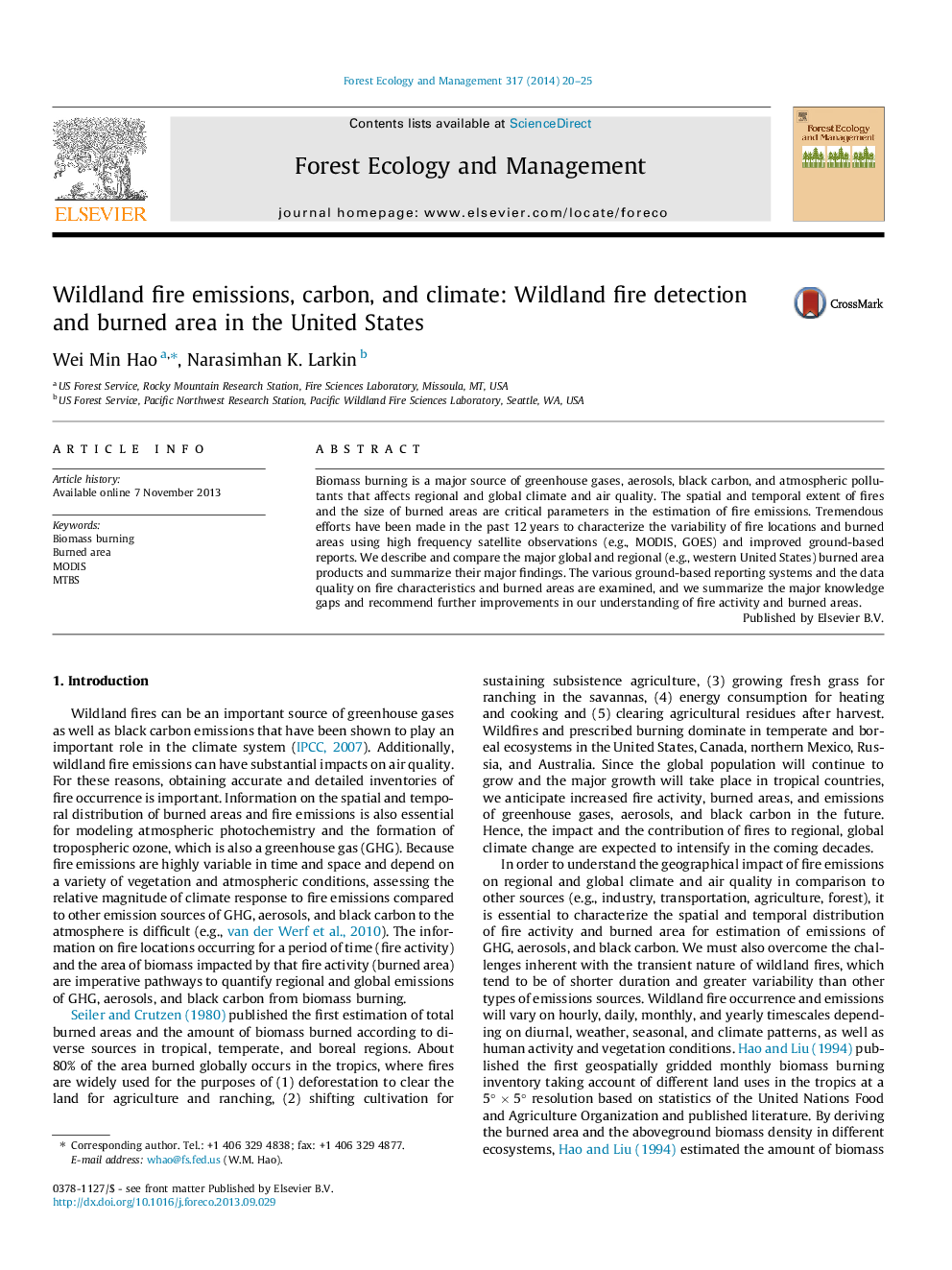| Article ID | Journal | Published Year | Pages | File Type |
|---|---|---|---|---|
| 86638 | Forest Ecology and Management | 2014 | 6 Pages |
•We examine how wildland fire information gathering has changed over the past decade.•Satellite and ground based systems for detecting and reporting fires are discussed.•Different satellite systems are examined, including active detects and burn scars.•Knowledge gaps are identified including the potential for future improvements.
Biomass burning is a major source of greenhouse gases, aerosols, black carbon, and atmospheric pollutants that affects regional and global climate and air quality. The spatial and temporal extent of fires and the size of burned areas are critical parameters in the estimation of fire emissions. Tremendous efforts have been made in the past 12 years to characterize the variability of fire locations and burned areas using high frequency satellite observations (e.g., MODIS, GOES) and improved ground-based reports. We describe and compare the major global and regional (e.g., western United States) burned area products and summarize their major findings. The various ground-based reporting systems and the data quality on fire characteristics and burned areas are examined, and we summarize the major knowledge gaps and recommend further improvements in our understanding of fire activity and burned areas.
